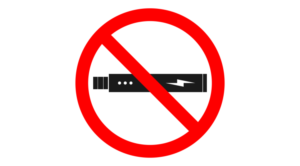The “loss of chance” doctrine allows patients to recover when a doctor’s negligence reduces their chance of survival. Essentially, a doctor can be held liable for the value of the patient’s “lost chance” at surviving by negligent actions like delayed diagnosis. In 2013, the Minnesota Supreme Court created the “loss of chance” doctrine in medical malpractice cases. However, in North Dakota, the courts have not expressly adopted this form of recovery for plaintiffs.
The loss of chance doctrine provides an opportunity for patients to recover in situations where they otherwise may not be able due to a low chance of survival. Under the newly adopted doctrine, if a delay in diagnosis results in a reduction to a patient’s chance of survival, the patient can recover for that reduction. The Minnesota Supreme Court created the doctrine in a case where a newborn’s parents told their doctor about a bump on their daughter. After taking their daughter to other doctors, she was diagnosed with cancer which was treated and subsequently recurred in 2010. The loss of chance doctrine allows for recovery of damages for the delay in diagnosis, even if a patient was terminally ill. In this case, the parents recovered for their daughter’s loss of chance at survival caused by the doctor’s delay in diagnosing her cancer.
Traditionally, plaintiffs have difficulty recovering for medical malpractice when the patient had a less than 50% chance of survival before negligence occurred. Therefore, doctors would potentially face no liability for any negligence if a patient was terminally ill prior to the negligent action. For example, if a patient had a 49% chance of survival and a doctor acted negligently reducing the patient’s chance of survival by 20%, under the traditional approach the patient could not recover. Under the newly adopted loss of chance doctrine, a patient can be compensated for that 20% loss of chance of survival caused by the doctor’s negligence.
Opponents of the loss of chance doctrine argue that the harm may never happen and it is difficult to tell whether the doctor caused the problem or if it was a natural progression of the disease. Further, some opponents worry that the doctrine will increase the cost of healthcare and prevent doctors from attempting to treat terminally ill patients. Overall, by adopting the doctrine in Minnesota, courts created an additional form of recovery for medical malpractice plaintiffs.
In North Dakota, courts have not expressly adopted the loss of chance doctrine, however some case law suggests there is a basis for recovery due to delayed diagnosis. In VanFleet v. Pfeifle, M.D., 289 N.W.2d 781 (N.D. 1980), the North Dakota Supreme Court acknowledged that some damages could be recovered when an earlier detection of cancer probably would have sustained life for a longer time. Although North Dakota plaintiffs may not be able to recover under the “loss of chance” doctrine, the Minnesota Supreme Court created a way for plaintiffs to recover when a doctor’s negligence resulted in a reduced chance of survival. And certainly, North Dakota Courts would consider the adoption of the doctrine in Minnesota persuasive in any application or analysis.

Born and raised in Western North Dakota, Tatum O'Brien attended North Dakota State University and graduated with distinction from the University of North Dakota School of Law. She has since built years of litigating experience in her home state and become recognized as a highly skilled attorney representing clients in criminal and personal injury cases in addition to helping those who have experienced issues of medical malpractice, serious personal injury, and wrongful death.









Comments for this article are closed.